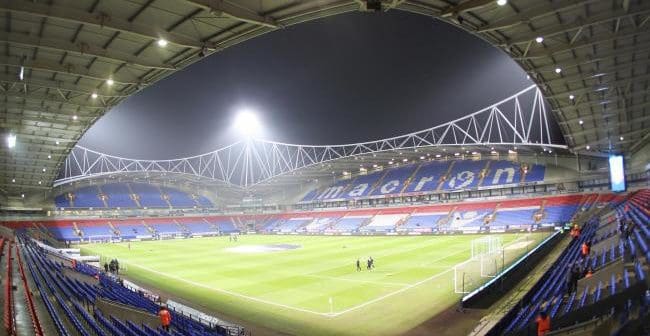The 20/21 season is quickly approaching, and many clubs are deep into their pre-seasons, with player signings coming thick and fast.
However this season, clubs in League One and Two will be having to abide by the new salary cap rules. So what actually is the salary cap? How will teams be affected? Will it be a leveller for the clubs involved?
What is the salary cap?
In a statement released by the EFL, they explained that the cap in League One will be a total of £2.5million, and in League Two, £1.5million. This money is the total that a club can spend on the following:
- Basic Wages;
- Taxes;
- Bonuses;
- Image rights;
- Agents’ fees and;
- Other fees and expenses paid directly or indirectly to all registered players.
The cap covers a lot of ground, and isn’t simply the figure spent on wages themselves, it covers a lot of other areas when bringing a player to the club. Although there is not a cap of transfer fees, it means transfers will have to take into account agent fees.
When looking at the cap, the EFL have said that players loaned out, where wages are fully or part covered by the loan club, will not need to be taken into account, as these wages are not on the parents clubs bill.
When looking at contracts that have been put in place pre-vote, or for relegated teams, the EFL said the following:
Any contract entered into on or prior to today’s vote will be capped at an agreed divisional average until that contract expires. Moving forwards, Clubs that are relegated will be permitted to cap all contracts at the divisional average prior to the Club’s relegation until those contracts expire.
This means that clubs that have got their transfer activity done early will be able to keep these deals ongoing, whereas those who still need to recruit, will have to abide by these restrictions.
So is this all viable?
In theory a cap seems great. It will level the playing field, meaning the coaching, tactics and ethos of a club are what get them promoted, not the ability to ‘buy your way out of the league’. It would also aide clubs in being profitable, and sustainable, something we are not seeing in football at the moment. But are the figures given by the EFL actually realistic? Or are we about to see some big changes across the board.

Credit: @Kieran Maguire

Credit: @Kieran Maguire
Here are two charts looking at the wages declared by League One and Two clubs, which does not make the £2.5 million and £1.5 million look remotely possible. Take Rochdale in League One as an example. They spent the lowest amount on wages out of the clubs that made their figures public. They spent £3.9 million on wages. It does not state if this is player and staff, or just player wages, but that are way ahead of the cap that has just been voted in. Sunderland are ten times over the cap, and I do wonder how they will be able to shed wages, if players are not sold, or reject negotiated deals.
In League Two, Morecambe are the only team within £1 million of the new cap, and that is a worrying thought given the implications of what could happen to clubs if they spend over the limit.
What does all of this mean?
In summary, big changes are ahead. Clubs will have to seriously trim down their squads, and rely on cheaper deals, younger players, or current players to accept new deals. The EFL statement outlined a very basic warning to clubs, that every £ spent over the limit will increase the punishment that they receive, which in my opinion, could see another couple of seasons decided by matters off the field, compared to what happens on it.
I think we will see more youth players, and academy products in the squads. These players often command lower wages, and will remove some of the other fees that would be involved when players move. It also means that we will hopefully avoid another situation where clubs are given big points deductions to determine the final league table.
I look at the figures in the charts above, and really struggle to see how some clubs can lower their wage bills to the cap given. It seems crazy to think that 8/13 clubs that feature in the League One figures need to lower their wages by over half.
It could also mean the gap between the Championship and League One could grow, making it tough to stay up once promoted, unless the Championship changes to follow suit, but then the gap to the Premier League opens up.
Is it fair?
From a neutral point of view, it seems as though teams will all be even, and that the lure of big wages will disappear. However, some would argue that a flat rate for all clubs takes away from the game. There will always be bigger and smaller teams, and those with a bigger turnover and revenue will argue that a different approach would have been more fair.
The argument is that a % of income, that is properly enforced would be a fairer means of a club to operate. This would mean easier transitions between leagues for teams, and it would allow those who earn more money to be able to spend it.
However this is something that is not happening, with some clubs spending 200% of their income on wages, which would be as tough to lower.
One point that I feel is important, is when this has been brought in. To bring a cap in during a transfer market means that there will be clubs who have signed players early, that will be able to continue to pay that rate.
Other clubs, who have had waited to get the players they want, now will be signing them under the salary cap rules. Is it fair? I am unsure. However it is no surprise that certain clubs that saw players flying through the door, have stopped signing players now a cap has been introduced.
Overall, I think the EFL have had to change something, as too many clubs are struggling, and a salary cap is the way they feel will be the most effective. We are set for a very interesting, and different season, with games behind closed doors, covid-19 keeping us on our toes, and now these financial restrictions.
EFL
News
![Prost International [PINT]](https://prostinternational.com/wp-content/uploads/2021/08/PINTtFontLogoRoboto1536x78.jpg)


